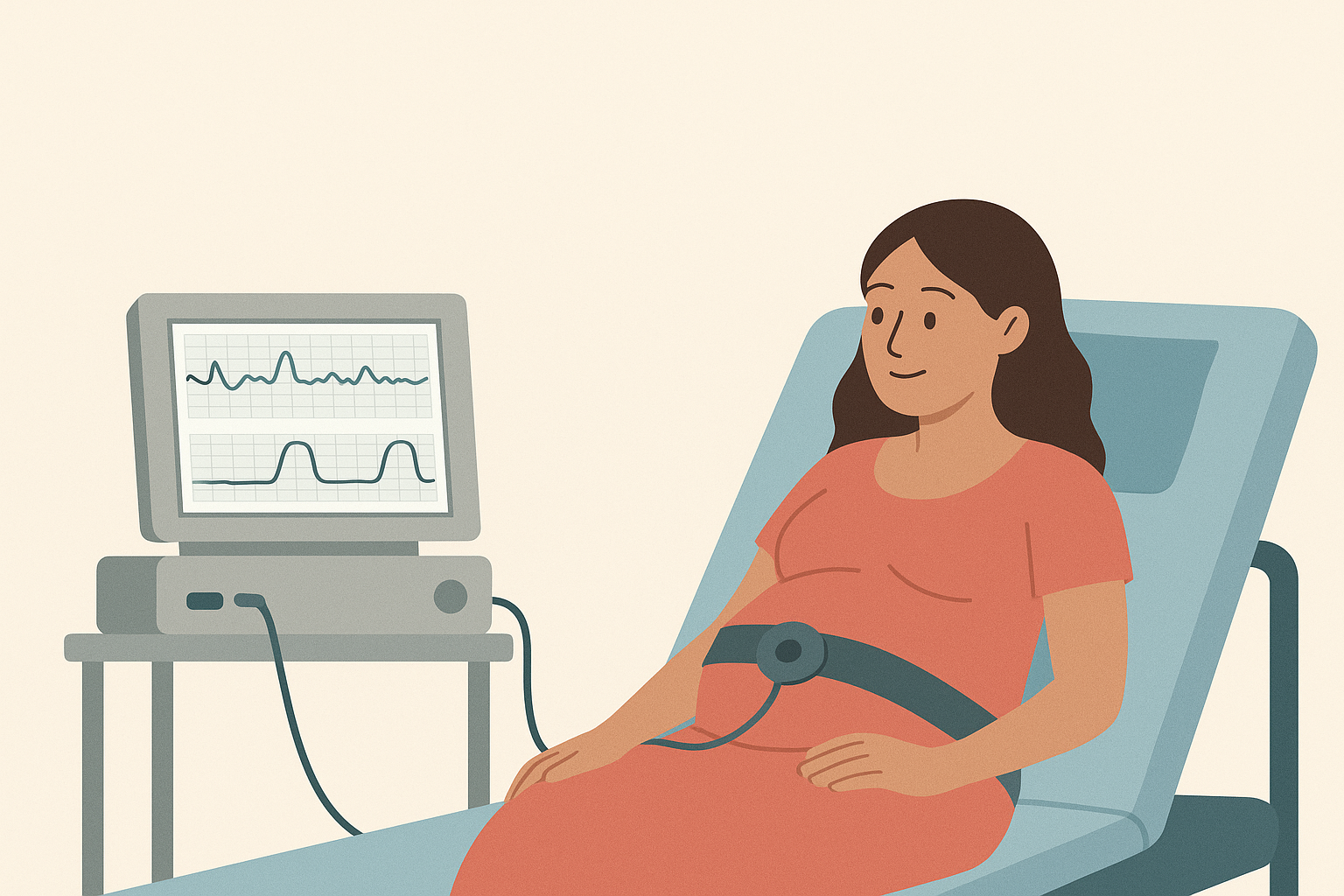
CTG Monitoring Explained: What Expecting Mothers Should Know Before Labor
When you’re nearing the end of your pregnancy, regular checkups become more focused on making sure your baby is safe and healthy. One of the most important tools used during this time is CTG monitoring, also known as cardiotocography. This test helps doctors and nurses check how well your baby is doing inside the womb. But what exactly does it measure, and why is it so important?
In this blog, we’ll break down CTG monitoring in simple language. We’ll also explain how the test works, what you can expect during the procedure, and what the results mean for your baby’s health.
What Is CTG Monitoring?
CTG monitoring stands for cardiotocography. It’s a simple and non-invasive test used to monitor the baby’s heartbeat and the mother’s uterine contractions during the final weeks of pregnancy and labor. The goal is to ensure that the baby is not in distress and is getting enough oxygen.
If you’ve ever wondered what CTG is in pregnancy, it’s essentially a way for your healthcare provider to see how your baby reacts to contractions or movements. If the baby’s heart rate remains steady and within a normal range, that’s a positive sign.
The CTG Test Procedure
The CTG procedure is usually done at the hospital or clinic. A healthcare provider places two round sensors on your belly using elastic belts. One sensor tracks the baby’s heartbeat, and the other tracks contractions. The test usually lasts around 20 to 40 minutes. You’ll be asked to lie still or slightly on your side during the monitoring.
Some tests are performed using a CTG electronic fetal monitoring machine that records data digitally. Your doctor may check the data to decide if further testing is needed.
Why Is CTG Monitoring Important?
CTG monitoring helps detect early signs of distress, such as if the baby is not getting enough oxygen. Doctors rely on it to decide whether labor should continue naturally or if intervention, like a C-section, is needed. It also helps track the effectiveness of drugs given to induce labor.
A CTG test is especially important for high-risk pregnancies, such as when the mother has diabetes, high blood pressure, or is past the due date. Even in low-risk pregnancies, it provides peace of mind.
Understanding Normal and Abnormal CTG Results
Doctors look at the baby’s heart rate pattern, baseline rate, variability, and how the heart rate changes during contractions. The CTG test in pregnancy normal range for heart rate is usually between 110 and 160 beats per minute.
An abnormal result doesn’t always mean there is a problem. It could be due to temporary factors like the baby sleeping or movement. However, continuous abnormal readings may require immediate action.
The Role of CTG Machines in Monitoring
Modern CTG machines are essential for accurate monitoring. These machines display graphs of heart rate and contractions in real time. In advanced setups, the data is stored electronically for later review.
Hospitals in Pakistan, especially larger ones, use digital CTG machines. Parents may wonder about the CTG machine price in Pakistan, which varies depending on brand and features but generally ranges from PKR 150,000 to over PKR 400,000.
NICE Guidelines and Global Standards
The NICE guideline CTG monitoring standards are widely followed in the UK and influence practices in other countries as well. These guidelines focus on how to interpret CTG results, how often monitoring should be done, and how to respond to abnormalities.
In countries like Pakistan, many top hospitals are adopting international guidelines to improve maternal and child health outcomes.
CTG Monitoring vs. Other Methods
Some parents ask how CTG compares with other monitoring tools. While Doppler and ultrasound can also check the baby’s heart rate, CTG offers continuous, real-time data. This makes it more reliable for use during labor.
Other benefits include:
- Early detection of complications
- Helps in planning delivery methods
- Useful in cases where the mother receives drugs to start labor
Emotional Reassurance for Mothers
Many mothers feel anxious about labor and delivery. CTG monitoring offers not just medical benefits but emotional reassurance. Seeing your baby’s heartbeat on the screen and knowing everything is normal can be calming.
If you’re unsure whether you need a CTG test, talk to your doctor. Some clinics offer it routinely in the last weeks, while others do it only when medically necessary.
FAQs
1. What is CTG monitoring in pregnancy?
CTG monitoring, or cardiotocography, is a method used to monitor the fetal heartbeat and uterine contractions during late pregnancy and labor.
2. How does a CTG machine work?
A CTG machine uses two external sensors: one tracks the baby’s heartbeat, and the other monitors the mother’s contractions. It provides a continuous readout used by doctors to assess fetal well-being.
3. What is the normal range for a CTG test in pregnancy?
The normal fetal heart rate during a CTG test ranges between 110 and 160 beats per minute. Variations outside this range may require medical evaluation.
4. Is CTG monitoring necessary for every pregnant woman?
Not always. While routine CTG monitoring may not be necessary for low-risk pregnancies, it is crucial in high-risk cases, during labor, or when complications are suspected.
5. Where can I find CTG machines in Pakistan and their price?
CTG machines are available at medical supply stores and online in Pakistan. Prices can vary depending on brand and features, typically starting around PKR 200,000 for basic models.
Final Thoughts
CTG monitoring plays a vital role in safe and informed childbirth. Whether you’re a first-time mother or have been through delivery before, understanding CTG can make your journey to motherhood smoother. From identifying potential complications to offering emotional comfort, the benefits of this simple test are far-reaching.
As always, consult your doctor or midwife for personalized advice. And if you’re in Pakistan, check if your hospital follows updated guidelines for CTG monitoring and uses modern CTG machines for the best care possible.
Call to Action
Expecting a baby soon? Make sure your hospital offers proper CTG monitoring and follows NICE guidelines. At Shaafi Hospital Alipur Islamabad, we use advanced CTG machines to ensure the safest care for both mother and baby.
Visit us on Lehtrar Road, Islamabad.
Learn more at Shaafi Hospital Alipur, Islamabad.
Book your maternity consultation today
